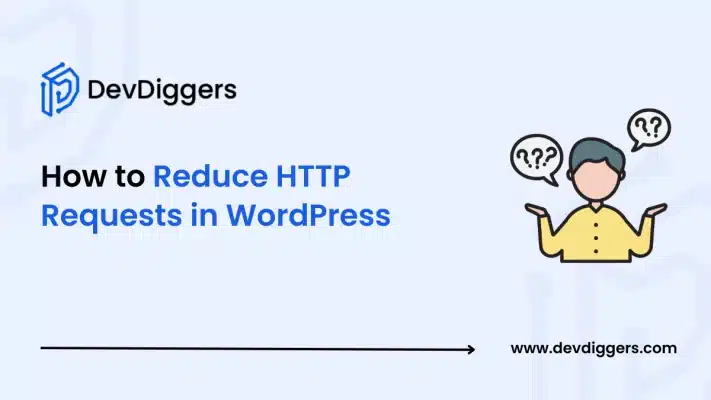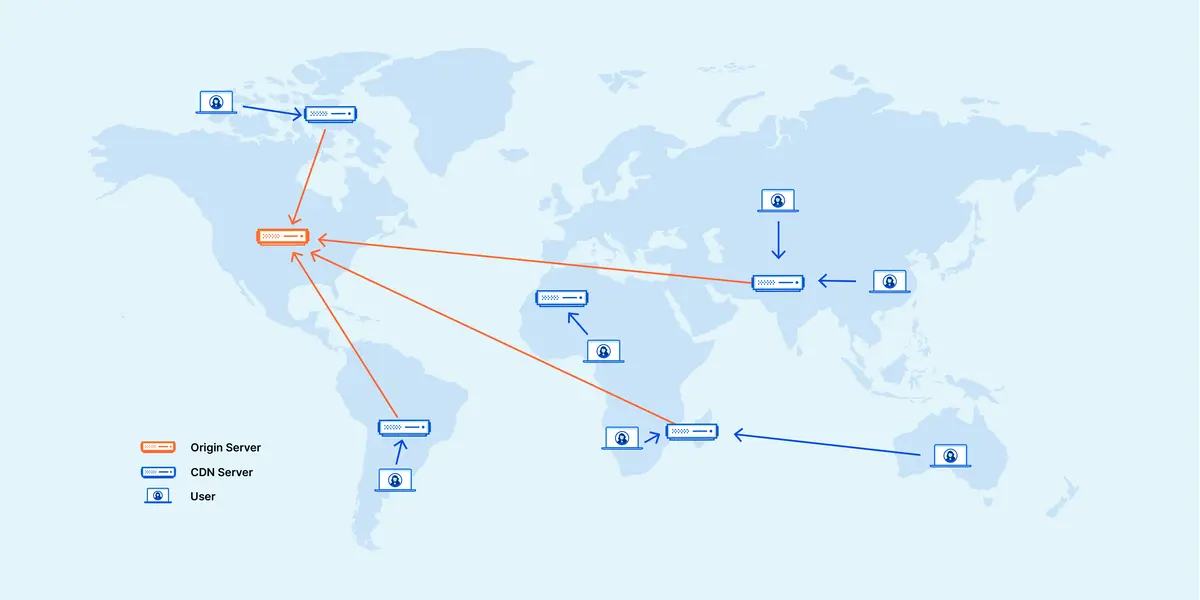- What Are HTTP Requests?
- Why Reducing HTTP Requests is Important
- How to Reduce HTTP Requests in WordPress: A Step-by-Step Guide
- 1. Minimize HTTP Requests by Optimizing Images
- 2. Minify and Combine CSS and JavaScript Files
- 3. Limit the Use of External Scripts and Fonts
- 4. Use a Content Delivery Network (CDN)
- 5. Reduce the Number of WordPress Plugins
- 6. Optimize Your WordPress Theme
- 7. Leverage Browser Caching
- 8. Enable HTTP/2
- 9. Reduce Redundant Content
- 10. Use HTTP Caching
- Conclusion
- FAQs
How to Reduce HTTP Requests in WordPress

- What Are HTTP Requests?
- Why Reducing HTTP Requests is Important
- How to Reduce HTTP Requests in WordPress: A Step-by-Step Guide
- 1. Minimize HTTP Requests by Optimizing Images
- 2. Minify and Combine CSS and JavaScript Files
- 3. Limit the Use of External Scripts and Fonts
- 4. Use a Content Delivery Network (CDN)
- 5. Reduce the Number of WordPress Plugins
- 6. Optimize Your WordPress Theme
- 7. Leverage Browser Caching
- 8. Enable HTTP/2
- 9. Reduce Redundant Content
- 10. Use HTTP Caching
- Conclusion
- FAQs
WordPress is an amazing platform for building flexible and scalable websites. However, as your website grows and more media files, plugins, and themes are added, its performance can suffer.
One of the main culprits behind slow WordPress websites is a high number of HTTP requests.
If you are interested in knowing how to reduce HTTP requests in WordPress, then you’re in the right place.
The excess HTTP requests may slow your website down considerably and affect user experience as well as even your SEO rankings.
Here, we shall discuss what HTTP requests are, how they affect the performance of WordPress, and, most importantly, how to reduce them.
What Are HTTP Requests?
But first, let us define what an HTTP request is before getting to the details of reducing the number of HTTP requests. An HTTP request simply refers to communication between a client’s browser and a server using the Hypertext Transfer Protocol.
Communication is mainly the sending of an HTTP request for every element on a page. This includes images, CSS files, JavaScript files, fonts, and all types of media.
For example, if your WordPress page includes:
- An image
- A stylesheet (CSS file)
- A JavaScript file
- Fonts
- A favicon
The browser will send separate HTTP requests for each of these elements. The more elements you have, the more HTTP requests are generated, which can significantly slow down your website.
So, reducing the number of HTTP requests is crucial for improving speed and performance.
Why Reducing HTTP Requests is Important
The good thing about having fewer HTTP requests on your WordPress website is as follows:
- Improved Page Load Time: The less number of HTTP requests the site has to make, the faster it loads. Page speed is crucial for user experience and tends to retain visitors longer in faster sites.
- SEO Optimization: Page speed is a Google search engine ranking factor. A slow-loading website is not good for your SEO. Fewer HTTP requests improve your page speed and then your SEO performance.
- Better User Experience: Users want the site to load faster. If your site takes too long to open due to too many HTTP requests, then visitors may leave before even seeing the content and increase bounce rates.
- Mobile Optimization: With the increase in mobile traffic, optimizing your WordPress site for speed is the need of the hour for mobile users. The number of HTTP requests must be reduced to achieve a faster mobile experience.
How to Reduce HTTP Requests in WordPress: A Step-by-Step Guide
Now that we’ve covered the basics. Let’s explore actionable steps to reduce HTTP requests in WordPress.
1. Minimize HTTP Requests by Optimizing Images

Images are often the largest things on a webpage and account for a lot of HTTP requests. How to Optimize Images:
- Use the Right Format: JPEG, PNG, and WebP are the most common formats used for web images. JPEG is great for photographs, PNG for images with transparency, and WebP for both high-quality and lightweight images.
- Resize Images: Large images take too long to load. Reshape your images so that they exactly fit the space where they will appear on your website.
- Compress Images: Use tools to compress images without losing quality while reducing file size. The good one is WP Smush, and the other one is ShortPixel.
- Use Lazy Loading: Lazy loading ensures images are loaded only when they come into view as scrolled by the user. This technique can drastically reduce the number of HTTP requests while loading a page.
2. Minify and Combine CSS and JavaScript Files
The CSS and JavaScript files are furthering the HTTP requests but are not optimized. Here is how you can minimize the number of requests:
- Minification of CSS and JavaScript: Removal of unnecessary characters from CSS and JavaScript files that include spaces and comments makes a file smaller; therefore, requests to load that file are reduced subsequently. Plugins like Autoptimize or WP Rocket help in this aspect.
- Combining CSS and JavaScript Files: Numerous requests to a server are minimized by combining many CSS and JavaScript files into a single file. In this way, you load ten different CSS files instead of one, for example.
- Defer Non-Essential Scripts: You can delay the loading of non-essential JavaScript files until after the page has loaded. This reduces the load time and the number of initial HTTP requests.
3. Limit the Use of External Scripts and Fonts

External scripts and fonts are often used to enhance the functionality and appearance of your WordPress site. However, each external resource adds another HTTP request. Here are a few ways to limit them:
- Reduce Third-Party Scripts: Every external script, like social sharing buttons, analytics scripts, and ad networks, adds HTTP requests. Remove or limit the use of unnecessary external scripts.
- Host Fonts Locally: Google Fonts, for instance, are hosted externally, meaning they generate HTTP requests when your site loads. Hosting fonts locally on your server can eliminate these requests, improving load time.
4. Use a Content Delivery Network (CDN)

A Content Delivery Network, short for CDN, is a type of distribution for your website’s content that spans multiple servers based around the world. Therefore, it reduces latency by serving resources from a server closer to the user for faster page loading.
Even though a CDN does not reduce the count of HTTP requests, it facilitates faster delivery. This is because caching and performance optimizations with popular CDN services like Cloudflare or StackPath make your site load faster.
5. Reduce the Number of WordPress Plugins
WordPress plugins are a very convenient way to extend the functionality of your website, although often, each makes multiple HTTP requests.
Some may even load scripts or styles that aren’t necessary for contributing toward HTTP requests. Review your installed WordPress site’s plugins to identify any redundant ones that may have been left in place without reason.
- Lightweight Plugins: Seek lightweight alternatives to heavy plug-ins. Some plugins are feature-rich but increase the number of HTTP requests significantly. Use those that provide the necessary functionality with minimal overhead.
- Disable Unused Features: Most plugins have preset settings that allow them to load extra scripts or stylesheets. Disable unused features within the plugin’s settings to reduce HTTP requests.
6. Optimize Your WordPress Theme

The number of HTTP requests also depends on the WordPress theme you choose. Some themes come with too many stylesheets, JavaScript, and media files, which will slow down your website.
- Choose a Fast and Lightweight Theme: Ideally, choose a theme that is optimized for speed. Second, look for themes that are about performance or have elements of clean coding.
- Remove Unused CSS and JavaScript: Most themes come with a number of CSS and JavaScript files your website might never use. You can delete unused CSS and JavaScript files or, more easily, disable them using Asset CleanUp.
7. Leverage Browser Caching
Browser caching allows the browser to cache static files such as images, CSS, and JavaScript locally on the users’ machines. Therefore, users do not have to re-download these resources every time they open a page on your site; thus, it reduces HTTP requests.
You can configure the browser caching by using the .htaccess file of your website or through any of the following caching plugins, such as W3 Total Cache and WP Rocket, with minimal effort.
8. Enable HTTP/2
HTTP/2 is the modern version of HTTP and offers many improvements to HTTP/1.1 over it. The capability to send different requests over the same connection means that there aren’t multiple overheads made by opening all those connections for HTTP/2.
Hence, the possible loading time with HTTP/2 becomes significantly less than that with HTTP/1. Double-check with your hosting provider that HTTP/2 is enabled on your server.
9. Reduce Redundant Content
WordPress sites are loaded with redundant content, which contributes to too many HTTP requests. For instance, if you have many embedded videos, social feeds, or widgets on your website, these add up to make extra HTTP requests.
- Remove Redundant Widgets: Related posts, most popular posts, or feeds from the social media site create additional requests. Use only the widgets that add value to the user experience.
- Embed Videos Wisely: Never host videos on your website. Always use services such as YouTube or Vimeo to embed the video on your web page. That saves server resources and reduces the number of HTTP requests.
10. Use HTTP Caching
Caching stores static versions of your web pages and serves them to users instead of dynamically generating the page each time it is requested. This means that the server will not receive as many requests, and pages will load much faster.
This improves site performance because of the minimization of HTTP requests. It does this with various caching methods like page, object, and database caching from W3 Total Cache, WP Super Cache, and WP Rocket caching plugins.
Conclusion
Reducing HTTP requests in WordPress is one of the most significant steps toward improving the speed and performance of your website.
With each reduction in HTTP requests comes optimization of images, combining of files, reduction of external resources, and utilization of caching. All these reduce the user’s wait time and improve the SEO rankings for your site.
As WordPress evolves, so do the tools and techniques available for optimizing your site. Implementing the steps above will not only help reduce HTTP requests but also ensure that your WordPress website runs efficiently and offers a fast, smooth browsing experience for visitors.
As you go through this in-depth article on how to minimize HTTP requests in WordPress, you will already be on your way to creating a high-performance website that hits it all, be it speed or user satisfaction.
FAQs
What are HTTP requests in WordPress?
HTTP requests are the requests that your browser makes in order to load those elements, such as images, CSS files, JavaScript, and fonts. Every element generates its own HTTP request, and too many are going to slow down your site.
Why should I reduce HTTP requests in WordPress?
The reduced HTTP requests result in faster page load speeds, enhanced user experience, and better SEO scores. Fewer requests translate to shorter loading times and better performance on both desktop and mobile devices. hello
How can I optimize images to reduce HTTP requests?
Images should be optimized. This means resizing them to the proper dimensions, compressing them so that their file size is not too large, and often using formats like WebP. Implementing lazy loading also ensures images only load when they appear in the user’s view.
Does using a CDN help reduce HTTP requests?
This, in turn, does not directly reduce the number of HTTP requests but provides a faster rate of content delivery because resources will be served off of servers located closer to the user, meaning lower latency and quicker load times.
Can caching reduce HTTP requests in WordPress?
Yes, caching stores static versions of your pages, allowing visitors to load them without making multiple HTTP requests for every page load. This reduces server load and enhances website performance.

Abhijit Sarkar
Hi, I’m Abhijit Sarkar. I am deeply passionate about creating engaging content and exploring. My journey includes gaining valuable experience in content writing and creating useful resources for my readers.

Leave a Reply